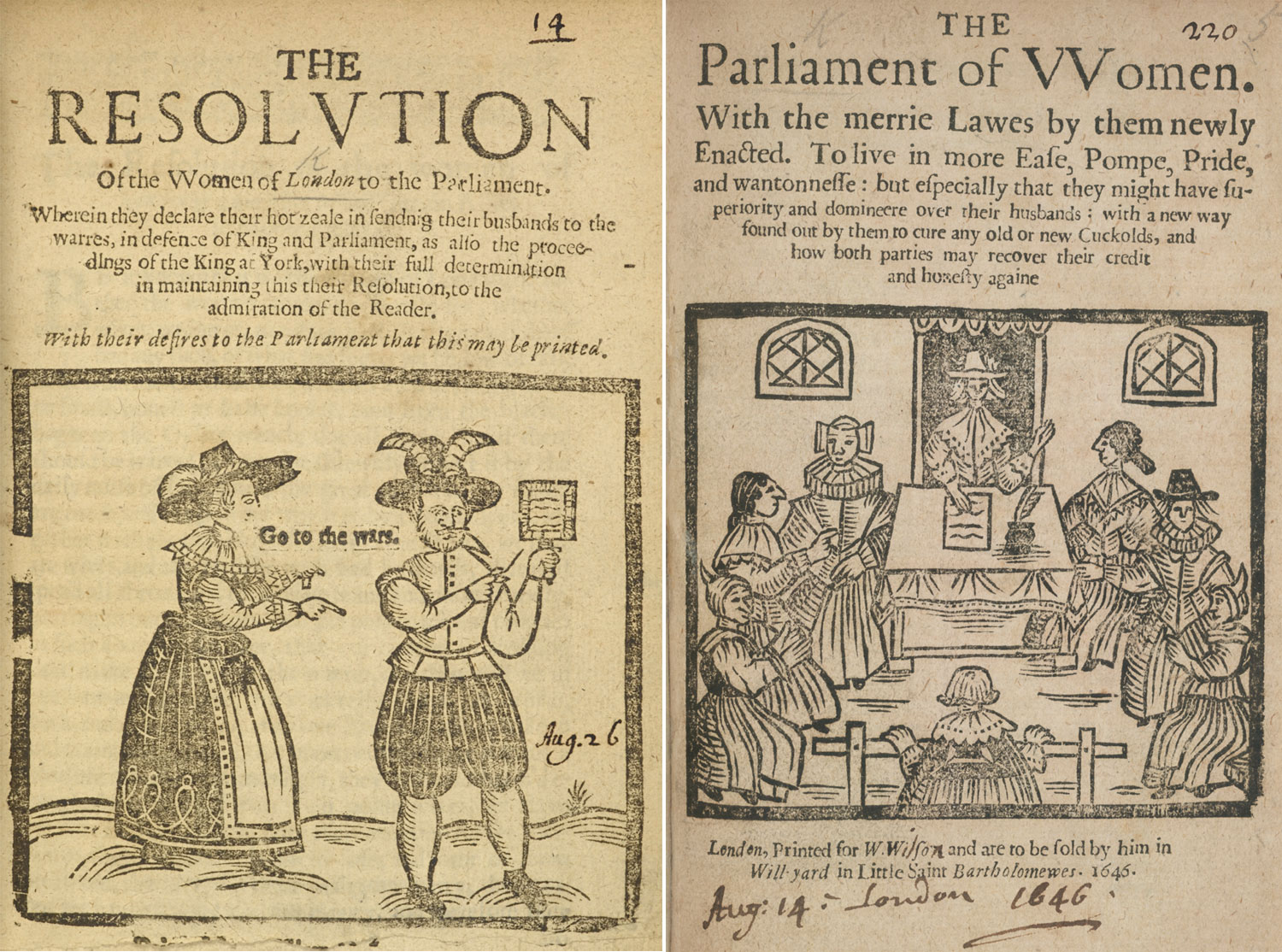
So far in this lesson you have looked at manuscript sources which were handwritten and either produced by a government department or sent into the government. At the time they would probably only have been read by a small selection of people.
However, during the Civil War the use of print increased dramatically. More people had access to pamphlets and newsletters that were produced by the printing press.
Both of these images come from the front pages of pamphlets that were available for members of the public to purchase and read. Some pamphlets would contain news or gossip, and some were official publications of Parliament. These pamphlets have images of women on them and tell us something about the ways in which people at the time represented women and thought they should act.
Transcript
[Right]
THE RESOLUTION
Of the Women of London to the Parliament.
Wherein they declare their hot zeale in sending their husbands to the warres [wars], in defence of King and Parliament, as also the proceedings of the King at York, with their full determination in maintaining this their Resolution, to the admiration of the Reader.
With their desires to the Parliament that this may be printed.
[Speech bubble]: Go to the wars.
[Left]
THE Parliament of Woman
With the merrie [merry] Lawes by them newly enacted. To live in more Ease, Pompe, Pride, and wantonesse: but especially that they might have superiority and domineere over their husbands: with a new way found out to them to cure any old or new Cuckolds, and how both parties may recover their credit and honesty againe.
Here are pictures from two Civil War pamphlets: ‘The Resolution of the Women of London to the Parliament’ (1642) and ‘The Parliament of Women (1646) © British Library.
- Look at both pictures. The first source contains a speech bubble to show what the woman was saying to the man. If there were similar speech bubbles on the second image what do you think the women might be saying?
- Take another look at the first picture. Woodcuts were used to produce images such as this in this period and they were often reused because they were expensive. Do you think that this image was originally intended for this pamphlet? What makes you think this?
- Which image do you think depicts women in a more positive way? Explain your reasons why.
